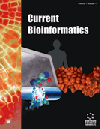- Home
- A-Z Publications
- Current Bioinformatics
- Previous Issues
- Volume 18, Issue 10, 2023
Current Bioinformatics - Volume 18, Issue 10, 2023
Volume 18, Issue 10, 2023
-
-
Identification of Secretory Proteins in Sus scrofa Using Machine Learning Method
More LessAuthors: Zhao-Yue Zhang, Xiao-Wei Liu, Cai-Yi Ma and Yun WuBackground: The expression of secretory proteins is involved in each stage of biomass from fetal development to the immune response. As an animal model for the study of human diseases, the study of protein secretion in pigs has strong application prospects.Objective: Although secretory proteins play an important role in cell activities, there are no machine learning-based approaches for the prediction of pig secretory pro Read More
-
-
-
Prediction of Cancer Driver Genes through Integrated Analysis of Differentially Expressed Genes at the Individual Level
More LessIntroduction: It is expected that certain driver mutations may alter the gene expression of their associated or interacting partners, including cognate proteins.Methods: We introduced DEGdriver, a novel method that can discriminate between mutations in drivers and passengers by utilizing gene differential expression at the individual level.Results: After being tested on eleven TCGA cancer datasets, DEGdriver substa Read More
-
-
-
IDRnet: A Novel Pixel-enlightened Neural Network for Predicting Protein Subcellular Location Based on Interactive Pointwise Attention
More LessAuthors: Kai Zou, Ziqian Wang, Suwan Zhu, Simeng Wang and Fan YangBackground: Understanding the subcellular location of proteins is essential for studying molecular and protein functions. Intracellular proteins must interact with appropriate molecules at the right time and in the right subcellular location to fulfill their functions. Therefore, the precise prediction of protein subcellular location can help elucidate complex cellular physiological response processes and is of great importance to resear Read More
-
-
-
Identification of Hub Genes in Neuropathic Pain-induced Depression
More LessAuthors: Chun-Yan Cui, Ming-Han Liu, Jian Mou, Si-Jing Liao, Yan Liu, Qun Li, Hai Yang, Ying-Bo Ren, Yue Huang, Run Li, Ying Zhang and Qing LiuIntroduction: Numerous clinical data and animal models demonstrate that many patients with neuropathic pain suffer from concomitant depressive symptoms.Methods: Massive evidence from biological experiments has verified that the medial prefrontal cortex (mPFC), prefrontal cortex, hippocampus, and other brain regions play an influential role in the comorbidity of neuropathic pain and depression, but the mechanism Read More
-
-
-
Visual Prediction of the Progression of Spinocerebellar Ataxia Type 3 Based on Machine Learning
More LessAuthors: Danlei Ru, Jinchen Li, Linliu Peng, Hong Jiang and Rong QiuBackground: Spinocerebellar ataxia type 3/Machado-Joseph disease (SCA3/MJD) is a clinically heterogeneous and progressive condition. Evaluation of its progression will contribute to clinical management and genetic counseling.Objective: The objective of this study was to provide a visualized interpretable prediction of the progression of SCA3/MJD based on machine learning (ML) methods.Methods: A total of 716 patients with Read More
-
-
-
Novel Gene Signatures for Prostate Cancer Detection: Network Centralitybased Screening with Experimental Validation
More LessAuthors: Anguo Zhao, Xuefeng Zhang, Guang Hu, Xuedong Wei, Yuhua Huang, Jianquan Hou and Yuxin LinBackground: Prostate cancer (PCa) is a kind of malignant tumor with high incidence among males worldwide. The identification of novel biomarker signatures is therefore of clinical significance for PCa precision medicine. It has been acknowledged that the breaking of stability and vulnerability in biological network provides important clues for cancer biomarker discovery.Methods: In this study, a bioinformatics model by characteri Read More
-
-
-
Drug-target Binding Affinity Prediction Based on Three-branched Multiscale Convolutional Neural Networks
More LessAuthors: Yaoyao Lu, Junkai Liu, Tengsheng Jiang, Zhiming Cui and Hongjie WuBackground: New drugs are costly, time-consuming, and often accompanied by safety concerns. With the development of deep learning, computer-aided drug design has become more mainstream, and convolutional neural networks and graph neural networks have been widely used for drug128;“ target affinity (DTA) prediction.Objective: The paper proposes a method of predicting DTA using graph convolutional netw Read More
-
Volumes & issues
-
Volume 20 (2025)
-
Volume 19 (2024)
-
Volume 18 (2023)
-
Volume 17 (2022)
-
Volume 16 (2021)
-
Volume 15 (2020)
-
Volume 14 (2019)
-
Volume 13 (2018)
-
Volume 12 (2017)
-
Volume 11 (2016)
-
Volume 10 (2015)
-
Volume 9 (2014)
-
Volume 8 (2013)
-
Volume 7 (2012)
-
Volume 6 (2011)
-
Volume 5 (2010)
-
Volume 4 (2009)
-
Volume 3 (2008)
-
Volume 2 (2007)
-
Volume 1 (2006)
Most Read This Month
Article
content/journals/cbio
Journal
10
5
false
en


